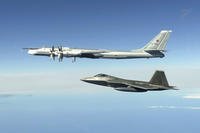The Marine Corps wants a new, less-expensive amtrac to replace its infamous Expeditionary Fighting Vehicle, but it's in a bind: How do you build a whole new fast, wave-skimming personnel carrier without falling into the same cost and delay traps that claimed the original? Maybe you build one that doesn't need to be as fast or cover as much distance. Before you can do that, though, you need to change the assumptions that underpin the whole project. In the world of the military services that can only mean one thing: a review.
Marine Corps Times' eminent correspondent Gidget Fuentes has a story this week that says the Corps is doing just that, though officials would never be so vulgar as to mention "specific platforms," she writes. Still, today the Marines have doctrine and concepts written to justify the EFV: Back in the day, naval and Marine planners assumed that a Navy expeditionary armada would need to stand well away from a hostile beach -- completely out of sight, in fact -- to keep the ships, crews and devil dogs all safe from today's cheap guided missiles. That meant if you wanted the Marines to reach out and touch anybody on the shore, they needed fast, high-end equipment, including their beloved MV-22 Osprey and the EFV. F-35B Lightning IIs would provide your local air support, and everything would have to fit aboard Navy amphibious warships.
Today, however, the EFV is a dead duck, and the Marines want to double-time its replacement so they can start the program before Congress makes any more of its nihilistic spending agreements. Trouble is, maybe you can't send a new amphibious vehicle into the theoretical scenarios for which the EFV was built without building another EFV -- which you can't. So as Marine officials told Fuentes, now they're going to look at this amphibious situation from soup to nuts, gather input from all the key stakeholders, etc.:
Col. Mike Groen, one of two co-chairs, said the group’s marching orders are “to take a good look at the operating concept and our role and strategy.” The work, he said, may be “somewhat of a revalidation.” “After eight years of (counterinsurgency) operations, we haven’t paid attention as much as we should have [to the Corps’ amphibious role],” he said.The working group will weigh military threats, fiscal constraints and strategies such as “operational maneuver from the sea” and “ship-to-objective maneuvers. Are these still valid?” Groen asked. “How would we really execute these today and in the mid-term?”
The panel’s work comes amid Amos’ campaign to reinvigorate the Marine Corps’s amphibious roots and its crisis-response role. It also comes as the Marine Corps and Navy brace for major budget cuts. Adding to the problems are the delays and high costs of war-fighting modernization programs, such as the Joint Strike Fighter and Joint Light Tactical Vehicle.
“We are certainly cognizant of the strategic and the fiscal environments,” Groen said. With that in mind, “let’s make sure that our methodologies and our operating concepts are sound. Budgets are going to drive capacity, at least in the near years,” he said.
The Marines have been saying for years that they get the big picture here: The United States will probably not have to invade Tarawa or Inchon again; tomorrow's potential amphibious scenarios won't look like that. But the Marines do argue the U.S. must keep some ability to knock on a bad guy's door from the sea, though they don't like to be pinned down about exactly how many amphibs, troops or other equipment that requires. The Marine Corps also argues that the blue-green team works great in non-hostile scenarios as well; they cite the U.S. response to the earthquakes in Haiti, Pakistan and Japan, among others, in which American sailors and Marines were among the first to deliver international assistance.
Now the trick for the Marines will be writing up an amphibious doctrine that fits their new amtrac, and fast -- defending all this stuff against the Army and Air Force, as well as think-tank skeptics, is going to be a big job in the coming crunch years.








